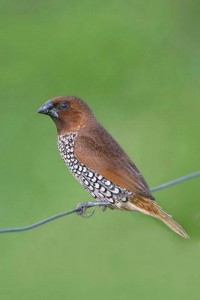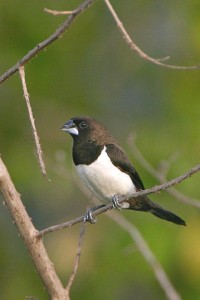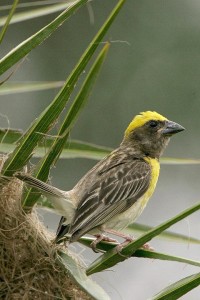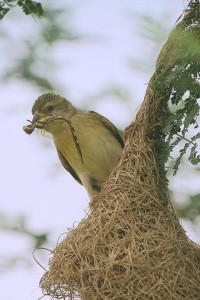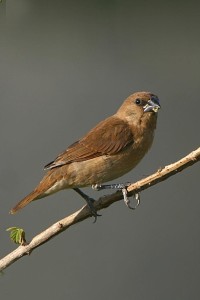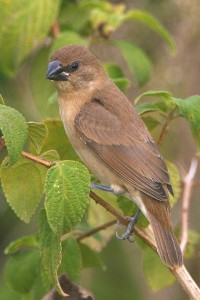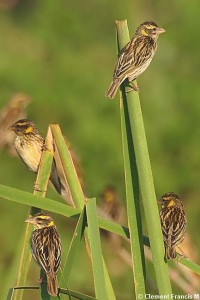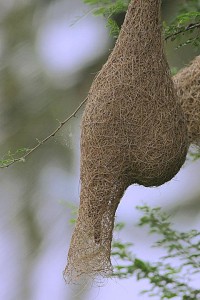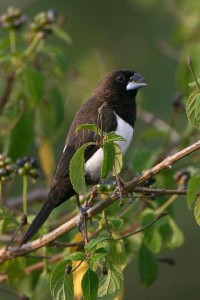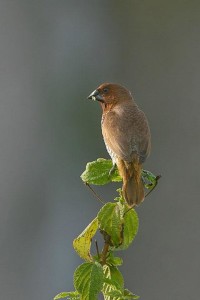In this bulletin I want to share with you all my experiences in observing the Finch Bills (Weavers & Munias) of Ramapura.
September 4th 2006 was a black day to natural history and conservation due to the sad demise of the World Famous Australian Naturalist and Conservationist Steve Irwin know to the world as the Crocodile Hunter, due to sting ray poisoning. He can be called as one of the greatest naturalists or THE greatest naturalist/conservationist of our times. For me it was a personal loss as I have drawn loads of inspiration, strength and knowledge from that great guy. For the common man Steve’s lifestyle would have been a risky one as he was always involved with dangerous wildlife but that’s what happens when you are madly in love with Mother Nature and her creatures. To put it in the words of Steve himself “Life should be passionate and full of surprises and that is the only way to living life to its fullness”. Often he would say that “I dream of conservation, I live for conservation and I would die for it as well”.
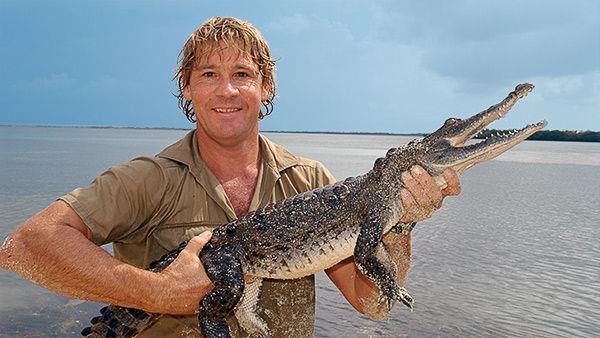
He had done immense work in the field of conservation and natural history and educated millions around the world on the wildlife that he loved so dearly. His educational displays at Australia Zoo and the TV programs always demanded respect for animals and how today wildlife is in need space and home for their survival. His fund raising efforts through out the world had large impact on the habitats that he created with the money collected. He and his wife Terry purchased acres and acres of land in Australia and also funded projects in Africa and other parts of the world to purchase wild habitats which wildlife and stopped many an encroachments otherwise.
My heart felt salutes to this great man who walked the earth during our times!!
Land of the Finch Bills – Ramapura Lake and the Surrounding Habitats
The scrub habitats laden with grassy patches, lantana filled dry habituation, a huge lake with reeds, large wells and ponds to irrigate the fields around make the best place for the Finch billed species of birds which comprises of Baya Weavers, Streaked Weavers, Red Munia or Red Avadavat, Scaly-bellied Munia, Black-headed Munia, White-Rumped Munia & Indian Silverbills at Ramapura. The grassy patches provide a great feeding area for these birds. They seldom quarrel among themselves even during peak feeding times which are early mornings and late evenings. Their favorite food is grass seeds and the weavers even feed on the tender roots of grass by digging. Also the dried lantana fruits are eaten by all these species.
Feeding in groups greatly help them as many birds perched on top of bushes act as sentries (guards) in locating the approaching danger in the form of humans and birds of prey. The large presences of acacia in this region provide a thorny home for the placement of their nests. The Scaly-Bellied Munias & Red Munias build their ball type nests in these trees with a side entrance. It is completely built with grass and cobwebs and soft material is used for lining up their egg chambers.
All the Munia species living in this region depend on their larger cousin the Baya weaver for their nests. The White-Rumped Munias and Indian Silverbills almost always use the nest of the Baya Weavers. Some times the abandoned nests are taken and most times these tiny birds are very aggressive with the Bayas and chase them away from their nests and move in immediately. The male Baya starts making another fresh nest once it is taken by force. The Bayas seldom use grass for their nest building activity, always fine strands of Wild Dates and Coconut leaves are used. The Streaked weavers on the other hand always are seen using grass to build their nests.
It was thought earlier that the incubation and caring of the young in the case of Baya weavers were entirely handled by the female but this is not true. In 2005 & in 2006 breeding times we (Suresh V & I) have observed that the males hunt insects and gather seeds for their young. In 2006 most protein for the young was obtained by feeding on dragon flies which were present in huge numbers in the area, surrounding the marsh land.
Note: Unless you see the young being fed by the parents it is very difficult to tell the young of Scaly-bellied Munia from the Silverbills.
Once their breeding season comes to an end, all the finch bills in this part form flocks and mixed hunting parties and can be seen feeding on the ground, bathing in the small mud pools formed during the irrigation activity in the fields and also the rains. Between 2-4pm in the afternoons most birds perch on the lantana bushes and sleep. Some times they allow you a very close approach for photography during this period. Also there is a good amount of people present in this area all the time and birds are not so shy of human.
Once their breeding season comes to an end, all the finch bills in this part form flocks and mixed hunting parties and can be seen feeding on the ground, bathing in the small mud pools formed during the irrigation activity in the fields and also the rains. Between 2-4pm in the afternoons most birds perch on the lantana bushes and sleep. Some times they allow you a very close approach for photography during this period. Also there is a good amount of people present in this area all the time and birds are not so shy of human.
For many years now I have been scouting this area and observing these birds and seldom have I got bored of seeing the same thing again and again. Birds always charm you with their completely unexpected acts and you can never learn enough about them even though so much of quality time is spent with them.
The ever growing real-estate business in this region is the greatest threat to these birds. Once their homes (wild habitats) are taken they are almost doomed. Even though one expects them to move to newer areas to establish their newer territories, it seldom happens as there is a threat to their habitats every where. I only wish that they remain here for ever……




